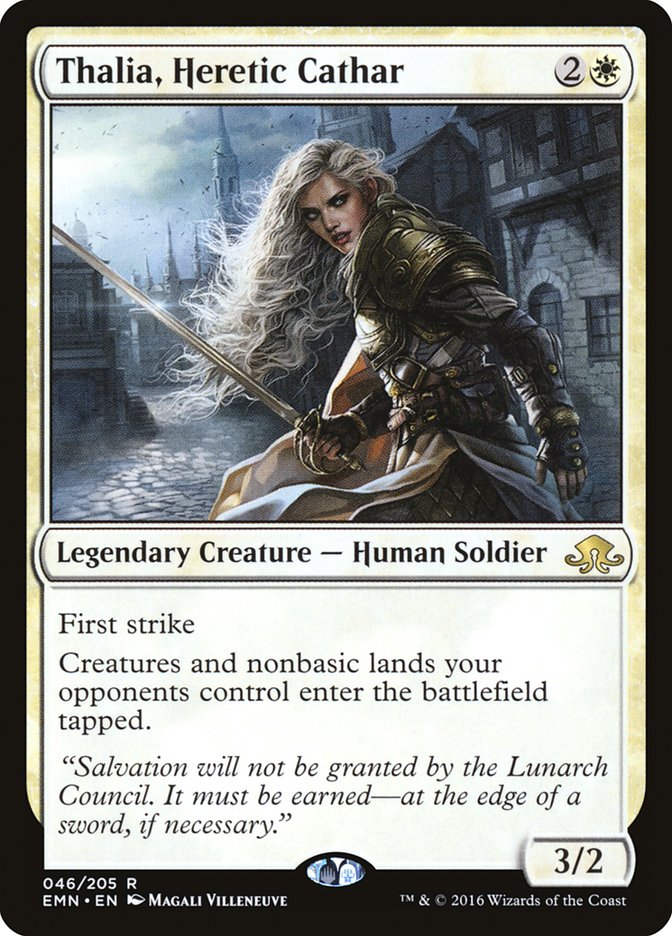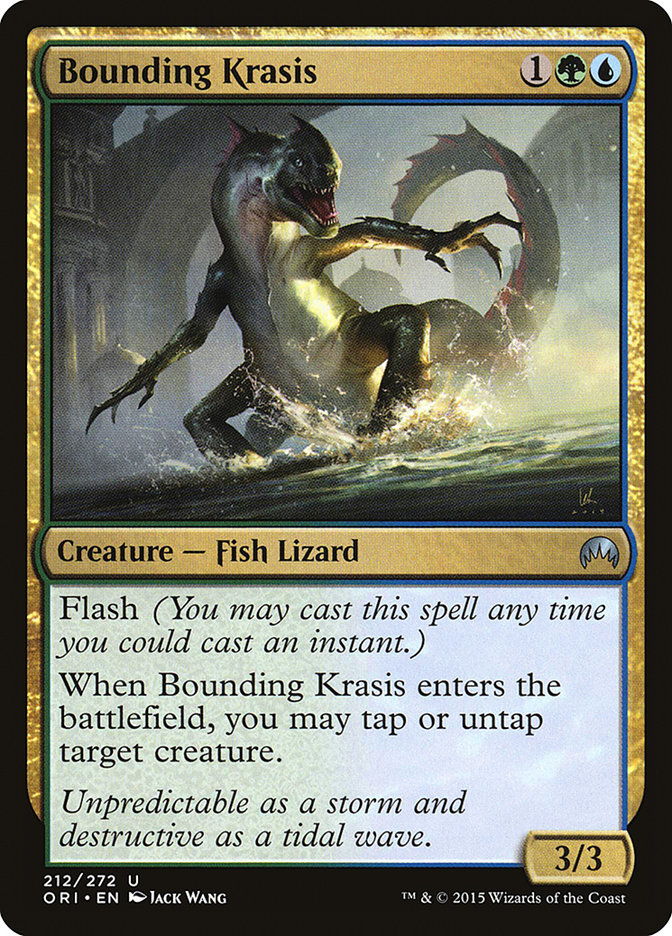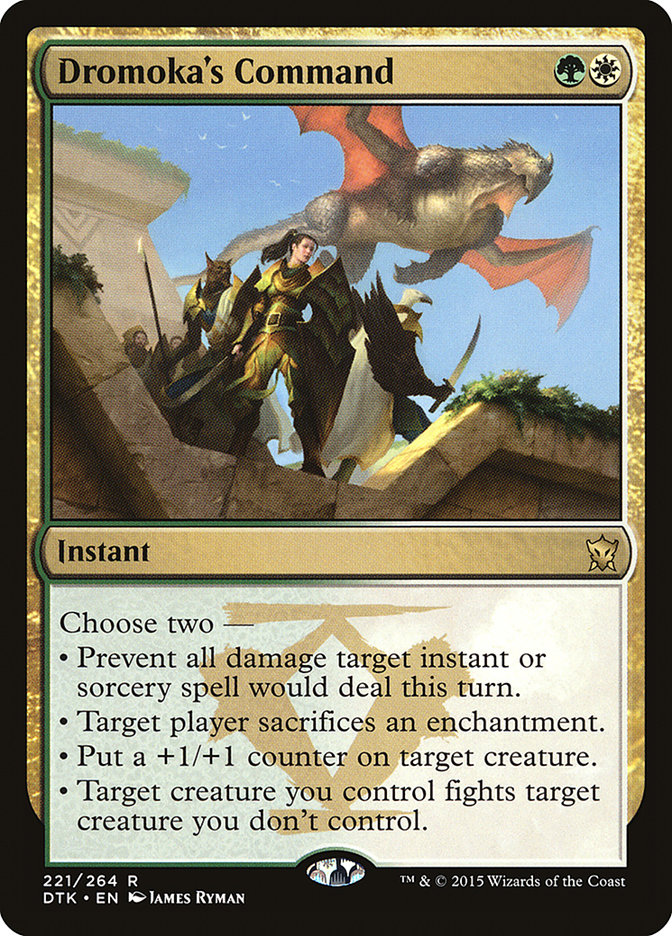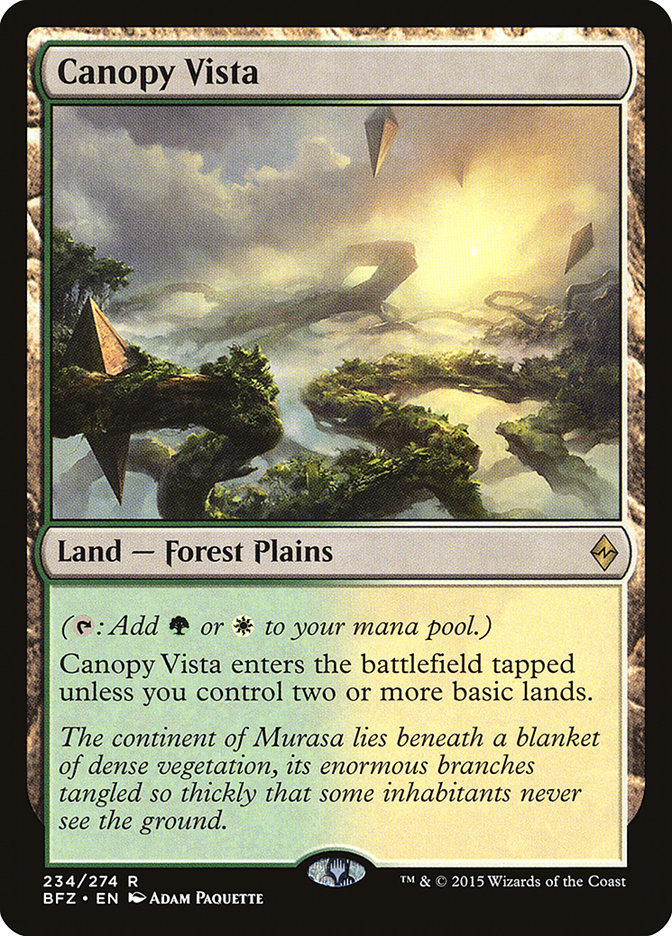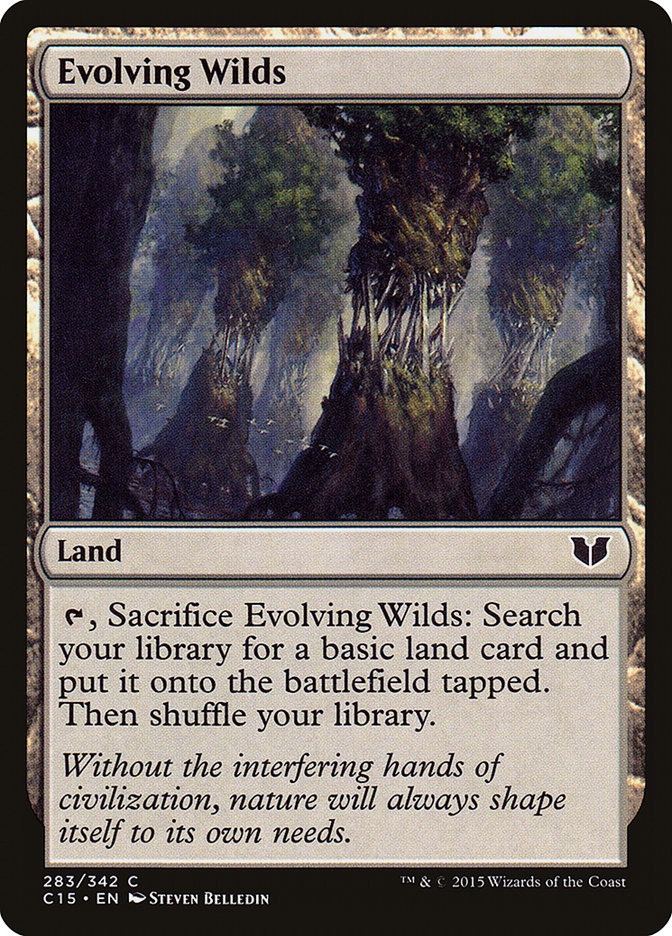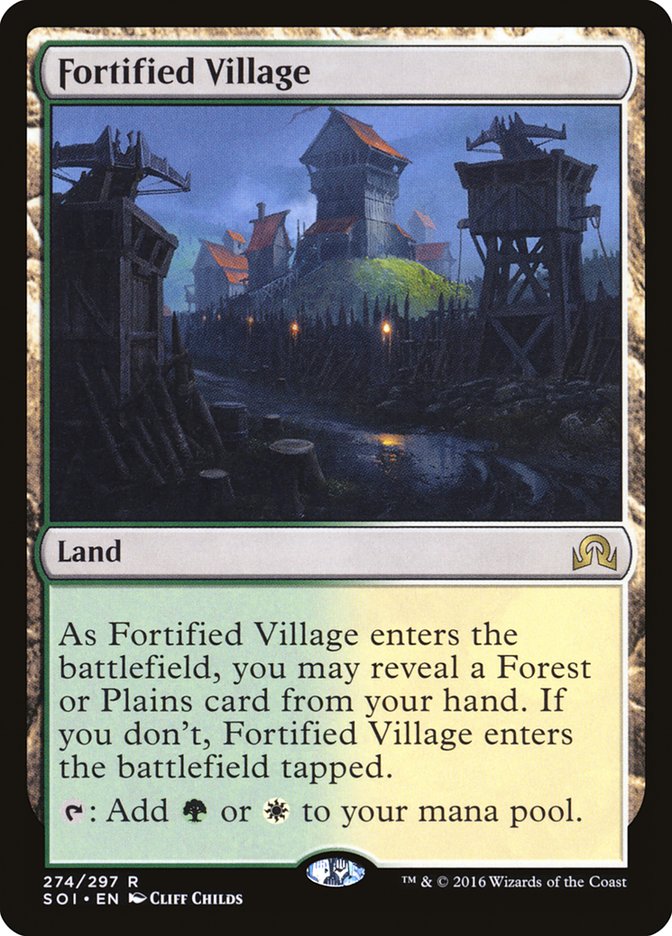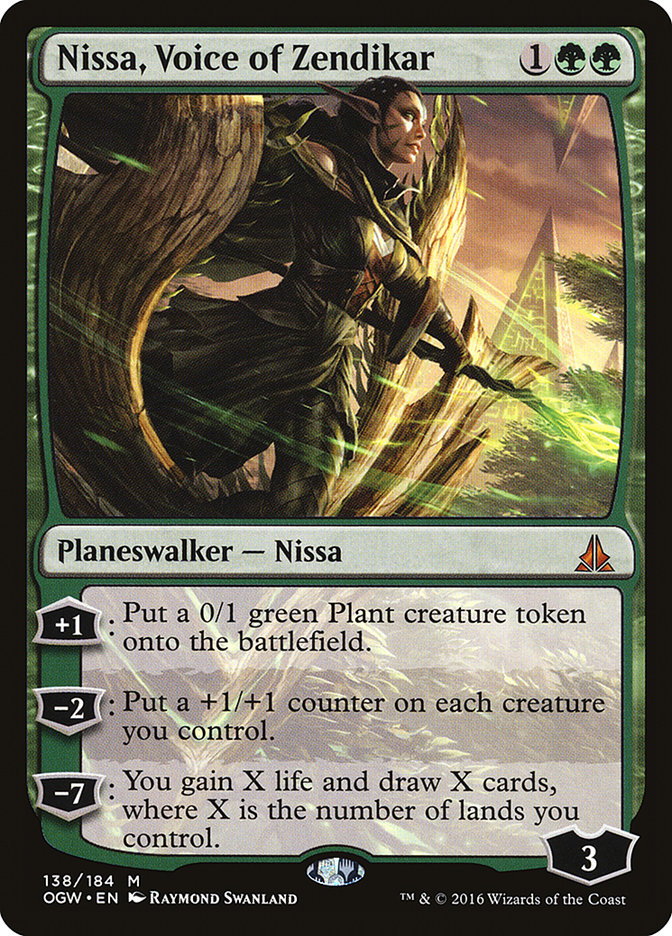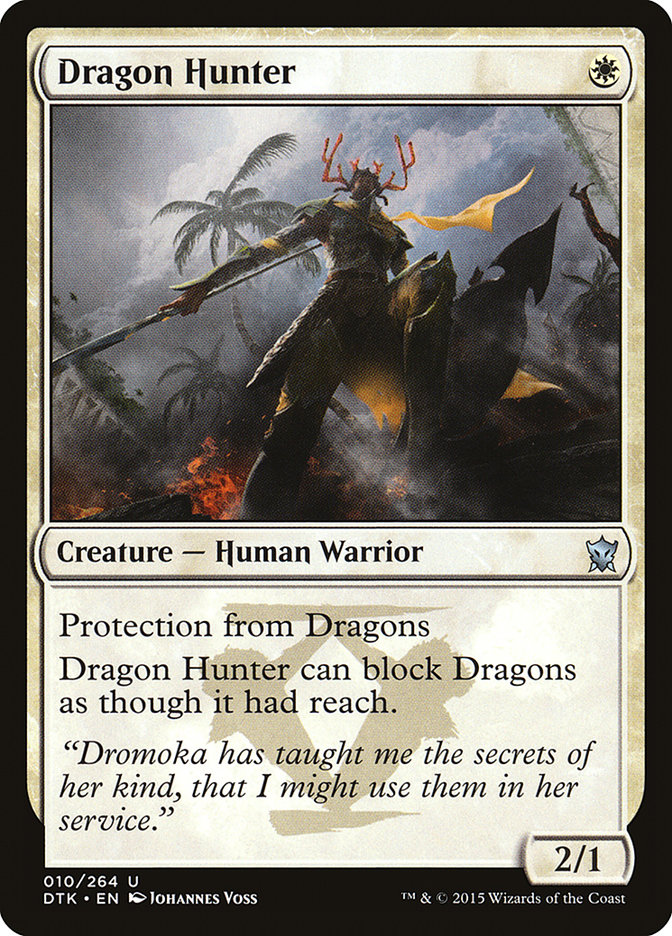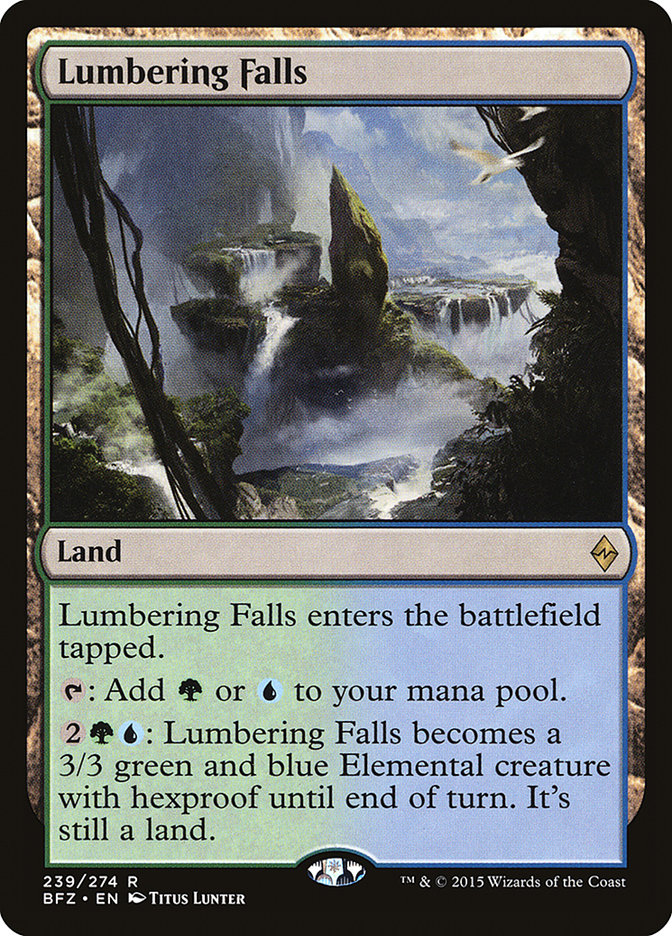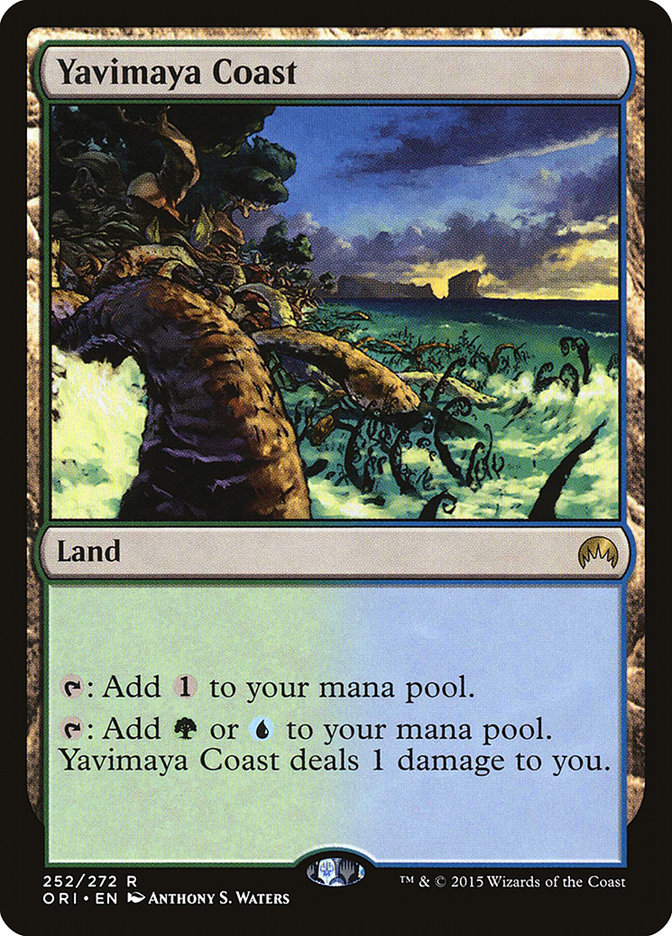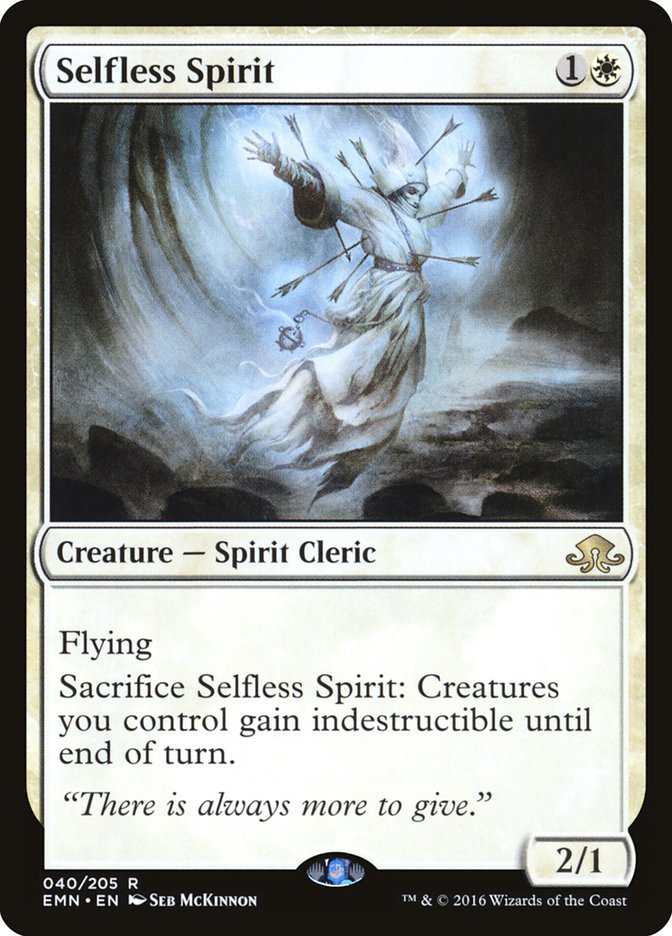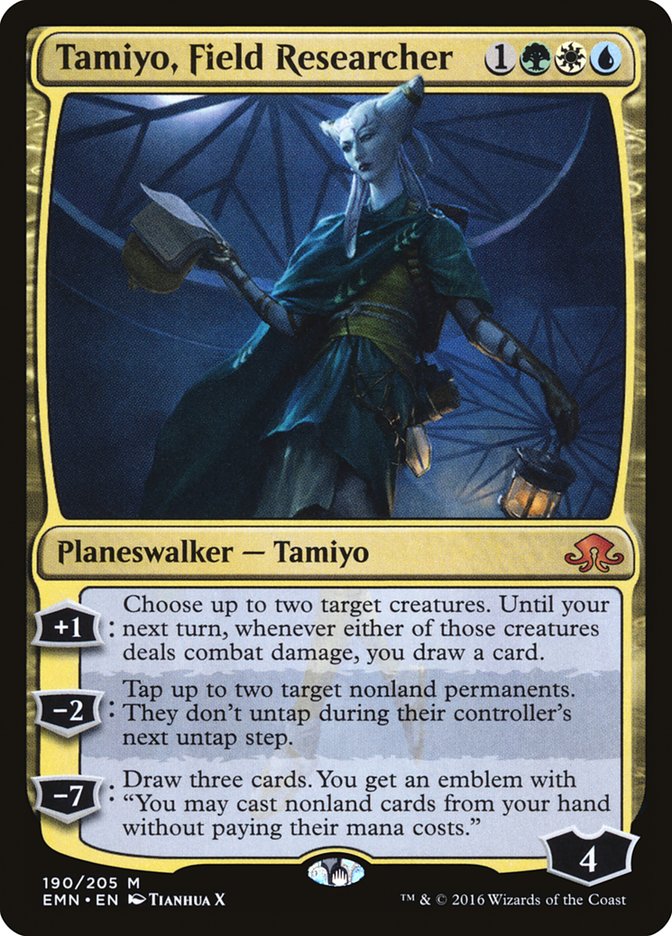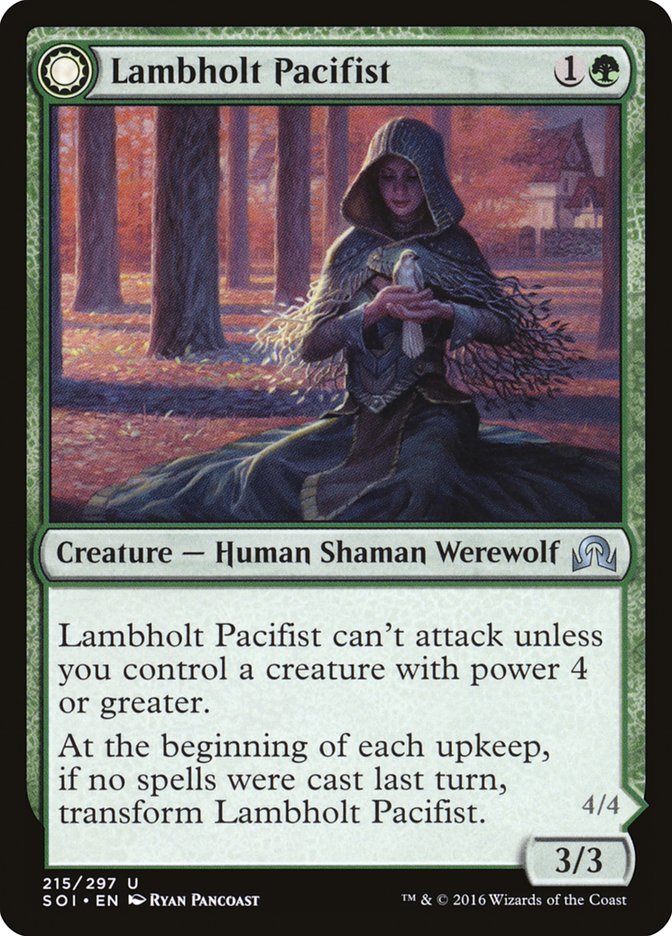I wish I could sit here and talk about all the interesting decks that popped up at #SCGCOL this last weekend, but it’s clear to anyone who looks at the results that that’s not what the format is about. Instead, Bant Company asserted complete dominance over the format with the addition of Spell Queller.
Various Bant Collected Company strategies were by far the most-represented deck on Day 2 and increased their metagame share moving into the Top 64.
While many of the Bant lists looked fairly similar, the winner Devin Koepke set his apart. While this win should not be surprising for anyone who follows the SCG Tour® based on his previous finishes, he did a lot of unique things right for this weekend that are worth analyzing for the next Tour stop at #SCGBALT in a week.
Creatures (27)
- 4 Reflector Mage
- 4 Sylvan Advocate
- 2 Archangel Avacyn
- 3 Tireless Tracker
- 3 Duskwatch Recruiter
- 3 Thalia, Heretic Cathar
- 4 Spell Queller
- 4 Selfless Spirit
Lands (25)
Spells (8)

The three Thalia, Heretic Cathar in his deck was a big development. Other people ran two, a reasonable number for a legendary creature, or zero, but three really sends a message about what Devin discovered about the power level of the card and what mattered in the format.
The first thing Thalia, Heretic Cathar does is give you a trump in the mirror match. Once you enter a game state where you are ahead with Thalia, most of the usual tricks Bant Company uses to try to catch up just don’t work. There are no flash blockers with Collected Company or Archangel Avacyn. Possibly more relevant is that none of their three-toughness creatures are capable of blocking it profitably. Even if you can cast Bounding Krasis and have it untap itself to block, it isn’t getting you anywhere. Double blocks on Thalia can kill it, but doing that means you are unlikely to block anything else and are open to death via Dromoka’s Command, and they may just play another Thalia when they have access to a full set.
The subtle part of this is that Thalia pushes these mirror matches towards an early end. One of the issues with the previous Bant Company mirror matches was that there was no real breaker and games could drag on forever. Craig Krempels played a two-hour mirror match at the last #SCGINVI that ended 3-0 in his favor. The move to Eldrazi Displacer meant someone had a trump card each game and ended up winning, but it was still an “eventually” kind of solution which won games where everything was already stalled and the game had dragged on before multiple Displacer activations in a turn buried the opposition.
Many players with Bant Company but no new tech picked up unintentional draws last weekend, which cascaded into further draws as they played more mirrors that ended up in the same situation. Thalia is not only good in the mirrors, but it is good in a way that makes them end in time. Someone can’t block, the game becomes a race, and someone dies by turn 7 or 8. Even if only one game goes this way, the number of matches you complete increases by a large amount.
Thalia, Heretic Cathar also has a Blood Moon effect on Standard, locking nonbasic-heavy opponents out of the game. Admittedly it is in the mild way of making them stumble a turn, but given that the “tapped land turn behind” games were some of the worst for every deck prior to Eldritch Moon, forcing your opponent into playing that way every game has huge upside.
The one caveat here is that this might be a first-week issue as people adjust to the new cards. The ingrained patterns of how you play your Battle lands and basics are hard to immediately shift from, especially when not every opponent has Thalia for you to play around. The other issue is that those play patterns echo out from before the tournament starts when choosing to play the lands you are used to playing.
Oddly, if Thalia turns out to be a defining metagame choice, it might get me to play more Shadow lands, which I have publically shown my disdain for as strongly as possible. While I think the Shadow lands make playing games of Magic and your general deck construction both miserable and worse, they play well against Thalia, as they promote tighter manabases where your nonbasics are played before turn 3. There’s a lot of thinking that has to happen about how you can construct this kind of deck to actually compete with Collected Company, but it’s a place to start if Thalia, Heretic Cathar becomes a stock issue to deal with.
It is worth noting that Thalia, Heretic Cathar lines up very well against the G/W Tokens-style self-protecting planeswalkers. Gideon, Ally of Zendikar having no abilities that immediately add to your battlefield presence besides the Emblem makes it a much worse card than if it makes a 2/2 blocker to start.
Thalia’s matchup against Humans initially doesn’t look that great, as you are clearly the control and don’t care about temporarily preventing blocks, but just being a 3/2 first striker is a big deal. It takes three pump effects to get Dragon Hunter to handle Thalia and it wins heads-up against an Incited Rabble, whereas a Reflector Mage or other 2/3 trades for a single pumped 2/1 and loses every time to a 2/3 with firebreathing. Having a Thalia won’t save you from a Gryff’s Boon, but it makes the attacks that often lead into one-hit danger range in the air much harder to execute.
There has also been a push away from Lumbering Falls since #PTSOI where Andrea Mengucci only played three copies of the card to the finals of the event. While creature-lands are extremely powerful and even better with Sylvan Advocate, simply hitting untapped lands via Yavimaya Coast on turns 2, 3, and 4 is more important. While I still like the card, it is almost unquestionably right for this list to be playing as few Lumbering Falls as possible.
Thalia, Heretic Cathar is one small reason. You have to cast Thalia on time to matter, as I mentioned last week. Two-drop into two-drop now means one of your best cards is significantly worse. The reason this is a small part is that most hands that had this line of play weren’t great to begin with.
The main reason this was a good idea for this week is the functionality of Lumbering Falls as a sweeper-resilient extra threat has been minimized. Languish is generally at a low point for a number of reasons. Not only does a sorcery-speed sweeper play merely okay against the flash-based Bant and Spirits strategies, the Languish decks generally get buried under Bant’s card advantage. You don’t need Lumbering Falls to win; it just solidifies a matchup Duskwatch Recruiter and Tireless Tracker have on lockdown. It was reasonable to assume you could afford to sacrifice slots against Languish decks and still win.
This is also a first-week Standard format. Maybe you play against Ali Aintrazi, but besides that, control is going to be poorly tuned and poorly represented without a clear idea of what it needs to handle. Another strike against maximizing your per-card value, another bonus for making a smooth proactive deck to overpower the other nonsense like Elder Deep-Fiend.
Tapping out to activate Lumbering Falls is also a poor proposition right now. With Bounding Krasis as your flash creature, you were okay casting your instant threat early and then spending your future mana with a 3/3 land attack, but Spell Queller is a different animal. If your opponent doesn’t give you something to spend the Spell Queller trigger on in the mid-game, there are a number of scenarios where you are ahead enough to sit on your “counterspell” and keep moving forward with your existing threats. This locked-in three mana means you are often not going to have enough sitting around to activate one Lumbering Falls, let alone a second.
Spell Queller exiling a Languish also has some weird tension with Lumbering Falls in that it often makes animating the land a risky proposition. If your Spell Queller dies in combat, that Languish is coming in on your turn and killing your hexproof land. This may also be a general issue with Spell Quellering Languish, however, and it might just be the kind of thing you avoid when the tempo isn’t huge, as an instant sweeper when they Grasp of Darkness your creature is a significant upgrade.
If we want to talk about the most common sweeper in the format, Lumbering Falls is also quite bad against Archangel Avacyn. While it survives the three-damage sweep, it doesn’t survive the 4/4 flash front end of the card. It also isn’t really enough to come back and race the 6/5 flying with bonus damage after the rest of your creatures die to Avacyn, the Purifier’s transform trigger.
You also have a good built-in answer to non-Languish sweepers in Selfless Spirit. While people were trying to dodge indestructible already due to Archangel Avacyn, Selfless Spirit let you cut off something like Radiant Flames or Kozilek’s Return during the developing stages of the game and not rely on Lumbering Falls to finish off control decks.
Selfless Spirit is also another big addition to the Collected Company deck for other reasons. The deck was lacking a really good two-drop prior to Eldritch Moon. Sylvan Advocate took the obvious first four slots, but Jace, Vryn’s Prodigy didn’t match the rest of your proactive game plan and Duskwatch Recruiter was bad in multiples and against a lot of the other creatures found on the ground of the format. Selfless Spirit is a fine beater due to flying and protects Tireless Tracker or random teams of creature from mass removal, which is basically across the good-enough line on its own.
The Archangel Avacyn interactions are where Selfless Spirit really goes from “acceptable addition” to “solid improvement.” It turns your opponent’s Archangel Avacyn into a lopsided sweeper like Desolation Giant, but more importantly it brings Bant up to G/W’s level in terms of transforming its own Angels. Selfless Spirit isn’t quite on the level of the zero-mana Hangarback Walker in terms of sweeping Humans aggro opponents, but it still lets you trigger Archangel Avacyn on a whim, which is brand-new to the archetype. Dromoka’s Command took work and setup; this just has to be on the battlefield.
Considering the 6/5 and Flamebreak part of Avacyn’s flip side is usually the most game-breaking, this opens up a whole new world for Bant and lets it have additional game-dominating effects in the maindeck without really cutting into a lot of the tight mana and creature numbers the deck has to maintain.
Devin’s Bant Company deck also eschews Tamiyo, Field Researcher as a result of this Selfless Spirit decision. There are only so many slots available for cards that aren’t two- or three-cost creatures in the deck, and with Dromoka’s Command, Collected Comany, and 25 lands, that maximum number is two. Tamiyo is a great card, but if your Selfless Spirits are maximizing Archangel Avacyn’s transform potential, why not lean into the synergies you are already building for?
The last card worth discussing is Lambholt Pacifist. Danny Jessup opted to maindeck this card, whereas Devin’s copies were relegated to the sideboard for Human aggro. This is almost 100% a continuation of the Bounding Krasis versus Thalia, Heretic Cathar decision being made. Eight flash three-drops make it really easy to pass turn 3 and transform into Lambholt Butcher before playing a creature, while Thalia does not do that.
For people looking to combat Collected Company, Devin’s list makes the world a scary place. While you now know what the deck is capable of, there are a lot of things that are now cut off. Some strategies are dead just to Thalia hampering your mana. Others lean too hard on things Selfless Spirit shuts down or Archangel Avacyn sweeps away.
The uphill battle against the best deck in the format has only just started, and it isn’t getting easier anytime soon.



